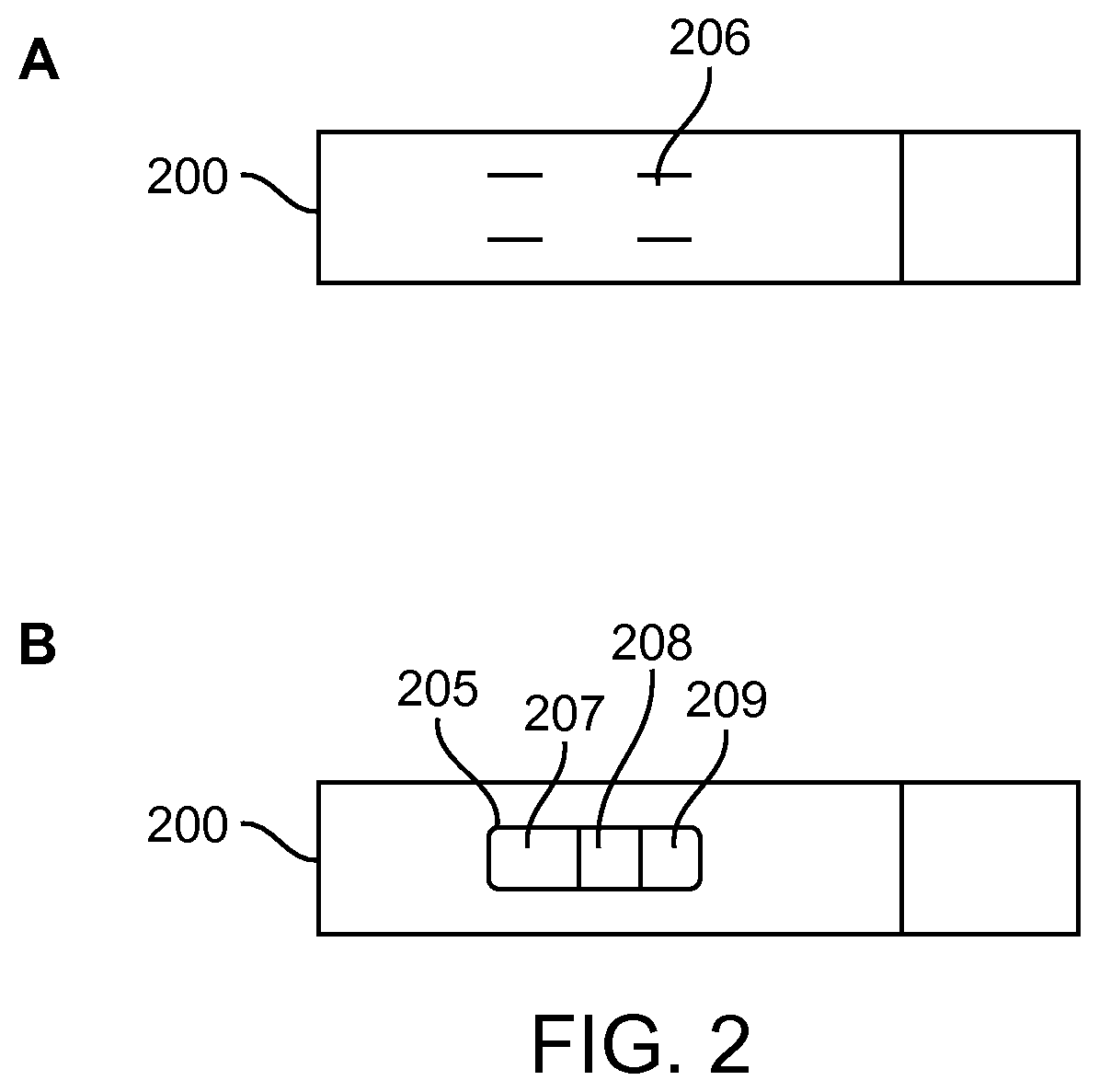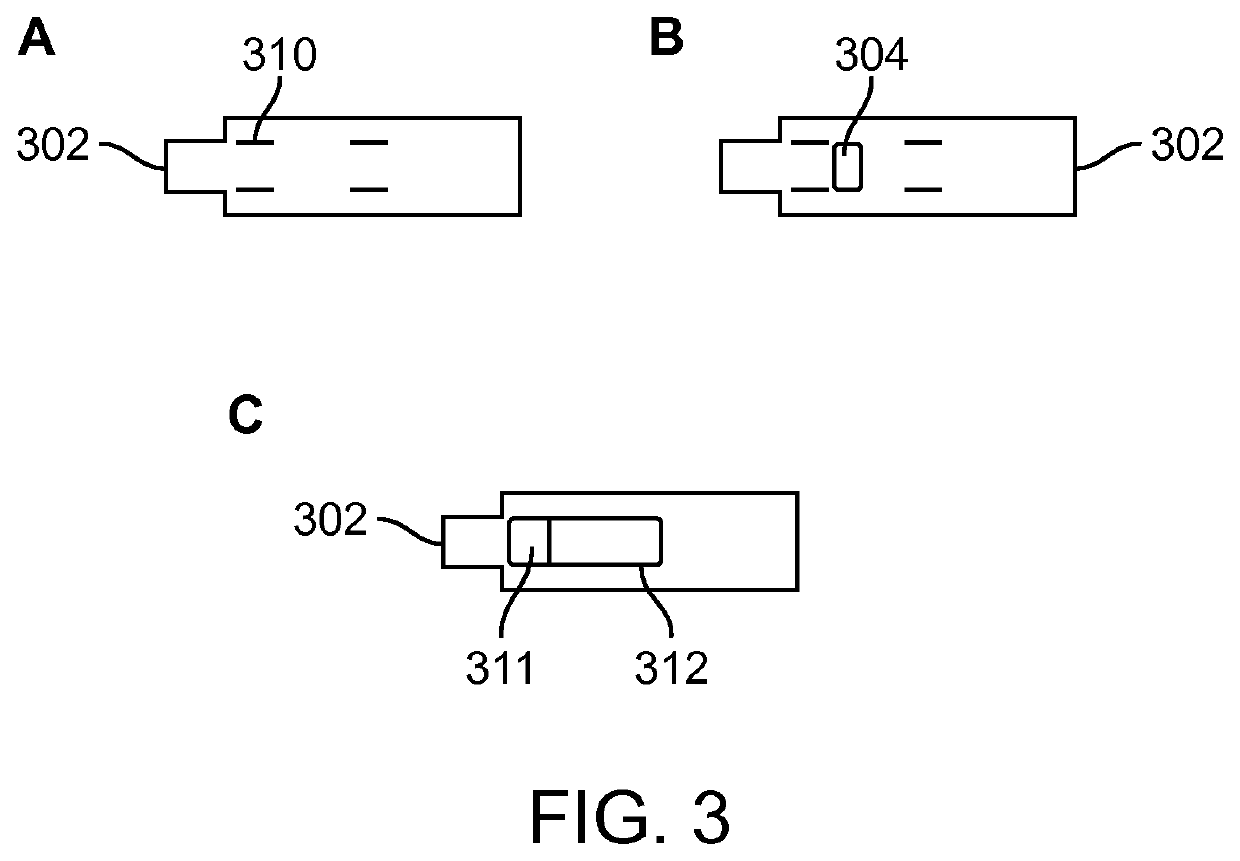Affinity matrix and devices for isolation and purification of RNA and DNA for point of care molecular devices
a technology of affinity matrix and molecular device, which is applied in the direction of fluid controller, separation process, laboratory glassware, etc., can solve the problems of requiring relatively large amounts of starting materials, and cumbersome methods and time-consuming methods, so as to achieve reliably and simply isolated nucleic acid in a short period of time, high throughput of samples, and quick and simple methods
- Summary
- Abstract
- Description
- Claims
- Application Information
AI Technical Summary
Benefits of technology
Problems solved by technology
Method used
Image
Examples
example 1
Preparation of Solid Phase Matrix
[0175]Gentamicin was coupled to BSA using N-hydroxysuccinimide (NHS) and 1-Ethyla-3-(3-dimethylaminopropyl) carbodiimide hydrochloride (EDC) according to the procedure described by Grabarek and Gergly [Grabarek, Z. and Gergely, J. (1990) Zero-length crosslinking procedure with the use of active esters. Anal. Biochem. 185, 131-135; which is incorporated herein by reference in its entirety].
[0176]Briefly, BSA at 10 mg / ml was reacted with 0.4 mg EDC (˜2 mM) and 1.1 mg of sulfo-NHS (˜5 mM) for 1 hour at 25° C. in MES buffer (pH 5) for 30 minutes. The reaction was quenched with the addition of 2-meractoethanol [final 20 mM]. Gentamicin (32 mg) was added and allowed to interact for 2 hours at 25° C. The reaction was quenched with hydroxylamine [final concentration 10 mM]. Similar procedures were employed for dihydroxy-streptomycin binding to BSA.
[0177]BSA conjugates of antibiotics were immobilized on polystyrene latex particles by passive absorption. Unbou...
example 2
Development of Nucleic Acid Binding Matrices
[0179]The feasibility of nucleic acid binding was developed and validated. Unique in-line separation chemistry segregates red blood cells from whole blood in Pad A and collects plasma into a separate zone [Pad B] for further reactions. The whole process is completed in less than one minute. A BoPET / Mylar strip contains reaction pad A, which is impregnated with reagents selected to immobilize RBCs and release plasma to Pad B, which is in conjunction with Pad A. Pad B is incorporated with affinity matrix to bind nucleic acids. Unbound materials will proceed to a sink pad after addition of wash buffer. After optimal incubation time elution buffer is applied and the device closed to transfer the released nucleic acids to Pad D that is part of a second separate BoPET / Mylar strip. Pad D contains the extracted nucleic acids for further processing. Released nucleic acids in Pad D are quantified by standard PCR techniques.
PUM
| Property | Measurement | Unit |
|---|---|---|
| ionic strength | aaaaa | aaaaa |
| affinity | aaaaa | aaaaa |
| nucleic acid analysis | aaaaa | aaaaa |
Abstract
Description
Claims
Application Information
 Login to View More
Login to View More - R&D
- Intellectual Property
- Life Sciences
- Materials
- Tech Scout
- Unparalleled Data Quality
- Higher Quality Content
- 60% Fewer Hallucinations
Browse by: Latest US Patents, China's latest patents, Technical Efficacy Thesaurus, Application Domain, Technology Topic, Popular Technical Reports.
© 2025 PatSnap. All rights reserved.Legal|Privacy policy|Modern Slavery Act Transparency Statement|Sitemap|About US| Contact US: help@patsnap.com



